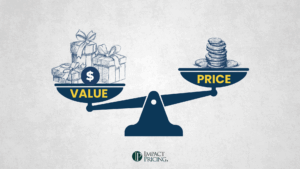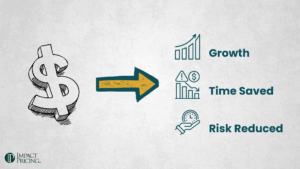You can listen to the full audio version of this blog we call — Blogcast.
A solution is a product or service that solves a problem. A platform is a product or service that can be used to solve many different problems. So, it seems obvious that platforms should be priced higher than solutions. However, that’s rarely the case.
When pricing a solution, it’s straightforward (not necessarily easy) to articulate and quantify the value of solving the problem. Of course, you don’t capture all of this value with your price, but this value drives your buyer’s purchase decisions and hence your pricing decisions.
Because platforms solve so many problems, it’s hard to choose one to articulate the value of. If you choose the one problem with the highest value when solved, and price accordingly, then you miss the entire market of buyers whose problems you can solve, but they aren’t as valuable.
If you price for the lowest value solutions, you leave a ton of money on the table from all of the people getting massive amounts of value. Most platform companies tend to start with cost-plus pricing, and as they grow, they use market research techniques estimating demand curves to justify increasing their prices. This is always sub-optimal.
I usually coach my platform clients to continue what they are doing, and then identify one extremely valuable problem they solve, and then create a solution targeted specifically at that problem. They can then market it to people who have that problem, and sell it at a higher price than they sell their platform.
Zoom is a platform. You can do so many different things on it. You can talk to your family. Or, you could sell and close a multi-million dollar piece of business. Zoom can’t tell the difference, so they can’t charge different prices based on how you use it. However, Zoom has also created solutions. For example, they have a solution for healthcare professionals to consult with patients over Zoom. Of course, this needs to follow strict confidentiality requirements. And as you might guess, they can charge more for this solution.
Buyers want to buy from someone who understands their problem. They want a solution to their problem. They want to believe when they buy and implement a product, it solves their problem. In other words, they value solutions much more than they value platforms.
Excel and Google Sheets are platforms. You probably use one or both. You can do almost anything with them. In fact, you could set them up to do your finances on them. Or, you could spend hundreds or thousands of dollars on QuickBooks, NetSuites, SAS, etc. Quickbooks is a solution. Excel is a platform. Although Excel can solve accounting problems, QuickBooks was built to do exactly that.
Take a look at your products. Are you selling a solution or a platform? One way to tell is to articulate the main problems that customers are trying to solve when they buy your product. What is the value to them of those solutions? If they widely vary, you probably have a platform and would profit from crafting a solution.
Which are you selling, a platform or a solution? How are you articulating the value?
Share your comments on the LinkedIn post.
Now, go make an impact!
 Tags: pricing, pricing value
Tags: pricing, pricing value













